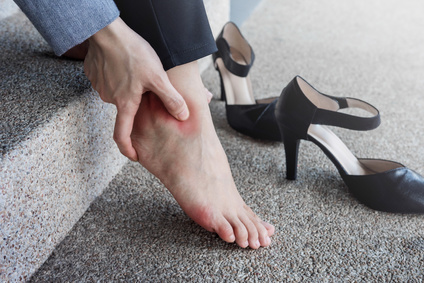Plantar fasciitis is one of the most common causes of heel pain we see as physical therapists. In fact, 10% of the population will experience it at some point in their lifetime. Since it’s so common, what are some of the important things to know about plantar fasciitis?
What is the plantar fascia?
It’s the flat band of tissue connecting your heel bone to your toes. The plantar fascia provides ligamentous support to the arches of your foot and plays a role in initiating the push off of your foot while walking.
What are the main causes of plantar fasciitis?
Structural risk factors are one of the first things we look at. People who have either a very high and very low arch are more likely to suffer. Both can cause differences in gait mechanics and place stress on the fascia. Age and weight also play a significant role. Peak incidence occurs in 40-60 year olds, especially when your BMI is over 30. Certain activities such as jumping and prolonged periods on your feet, especially when paired with poor footwear and limited flexibility in your foot and ankle can contribute to more pain and symptoms.
What are the most common symptoms?
Sensations from plantar fasciitis tend to be aching, sharp or burning pain. There is often pain when pushing on the bottom of the heel, toward the inside. People usually report the greatest amount of pain when first getting out of bed in the morning or after standing up from a prolonged period of sitting.
What are some tips for eliminating the pains from plantar fasciitis?
- Stretch the foot before getting out of bed in the morning. Try flexing your toes up toward the ceiling and perform ankle circles.
- When you get out of bed, take your first few steps with your big toe flexed up.
- If you can tolerate sleeping on your stomach, sleep with your feet off the end of the bed or over a large pillow to encourage ankle dorsiflexion
- If you can’t sleep on your stomach, consider a night splint to encourage ankle dorsiflexion
- If you sit at a desk during the day, sit with your ankle dorsiflexed under your chair or against the leg of your desk
There are many conservative treatment techniques that have proved to be very effective for resolving plantar fasciitis, including manual work, exercises, splints, shoe prescriptions and orthotics. Working with a physical therapist can help to relieve your pain and prevent it from becoming a chronic condition.

